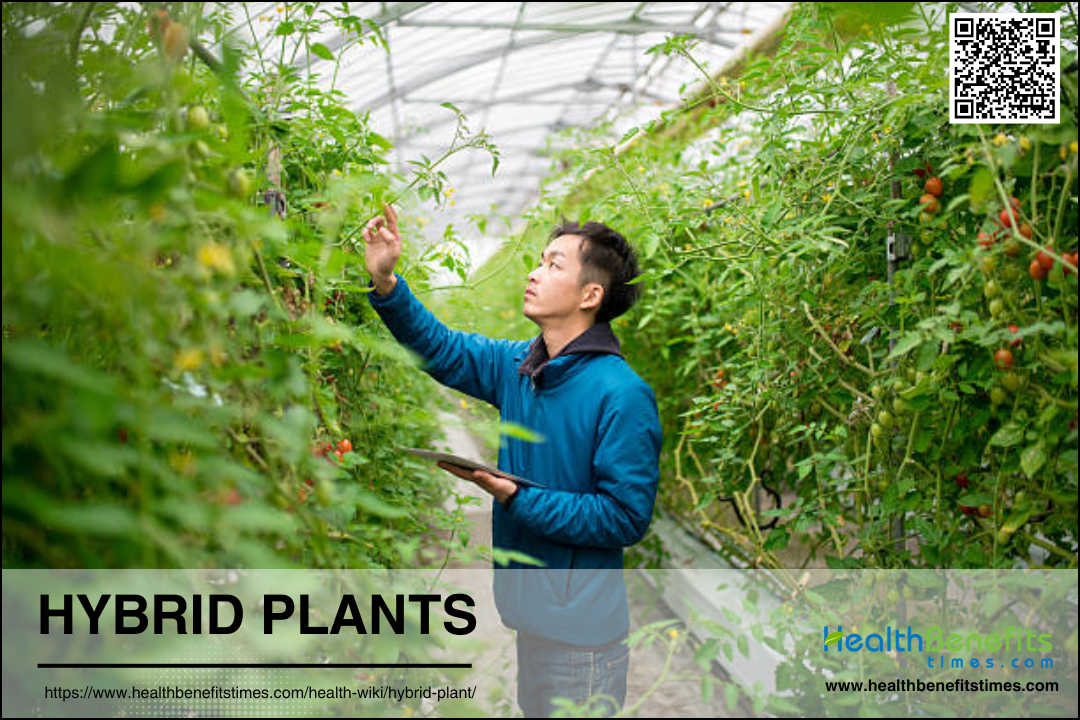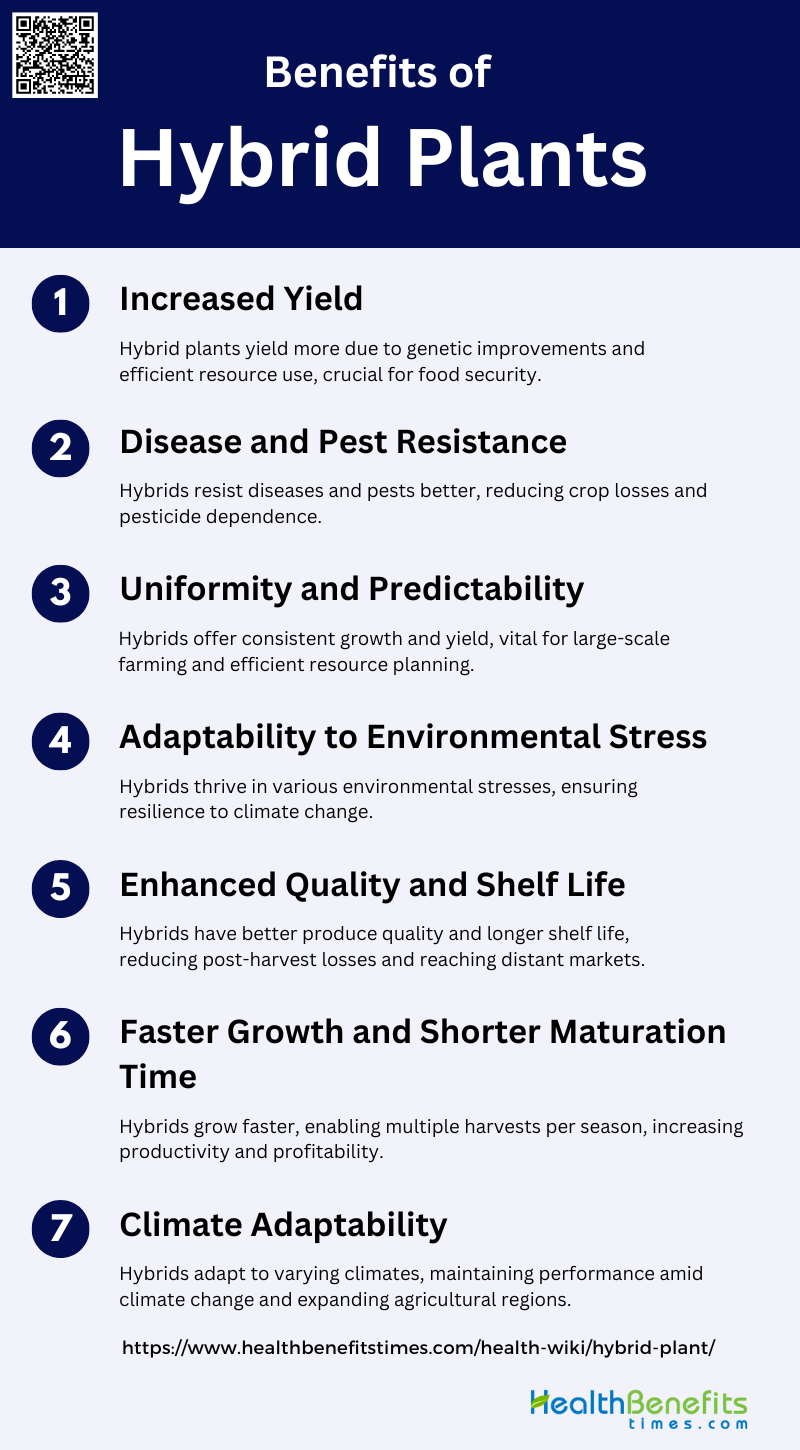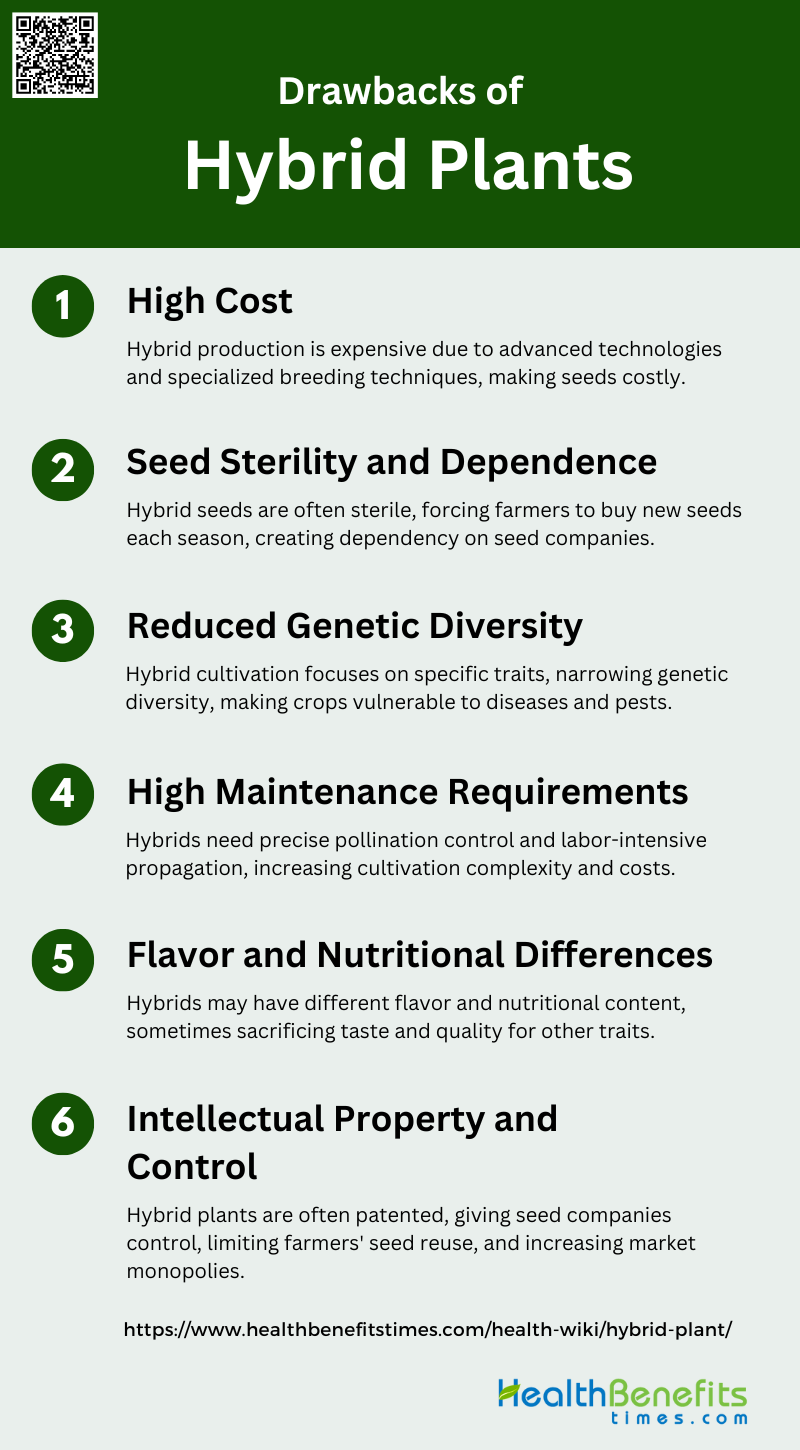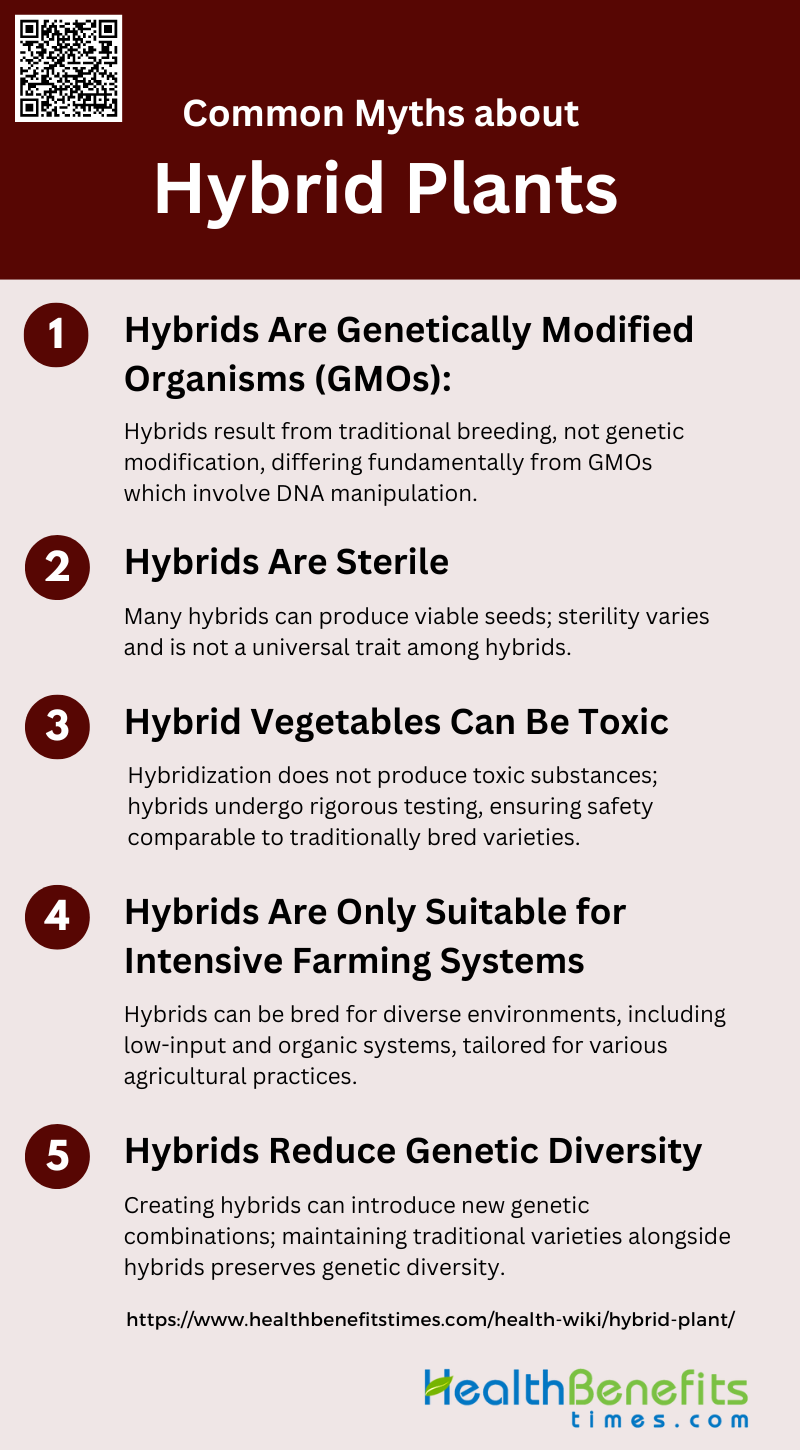A hybrid plant is a result of crossbreeding two different plant varieties or species to combine desirable traits from both parent plants. This process, known as hybridization, aims to produce offspring with improved characteristics such as increased yield, disease resistance, or environmental adaptability. Hybrid plants are commonly used in agriculture to enhance crop performance and ensure food security. For example, hybrid corn varieties have been developed to exhibit heterosis, or hybrid vigor, which results in superior growth and productivity compared to their parent strains.
Types of Hybrid Plants
Hybrid plants are cultivated by cross-breeding different species or varieties to combine desirable traits from both parent plants. This process results in plants that exhibit improved characteristics such as increased yield, disease resistance, and enhanced aesthetic appeal. Below are some common types of hybrid plants:
1. Interspecific Hybrids
Interspecific hybrids are the result of crossing two different species within the same genus. These hybrids often exhibit a combination of traits from both parent species, which can lead to increased genetic diversity and the potential for novel characteristics. For example, interspecific hybridization between Brassica oleracea and Brassica napus has been used to develop new vegetable Brassicas with unique morphological traits and improved seed development. Similarly, hybrids between Oryza sativa and Oryza punctata have shown significant changes in gene expression, a phenomenon known as “transcriptome shock,” which can lead to heterosis or hybrid vigor. Interspecific hybrids in the genus Elaeis have also demonstrated promising results, with vigorous F1 hybrids showing potential for further breeding work. These hybrids are valuable for breeding programs aimed at improving crop traits and expanding genetic variability.
2. Intergeneric Hybrids
Intergeneric hybrids are produced by crossing species from different genera, resulting in plants that combine traits from both parent genera. These hybrids are often rare and can exhibit unique characteristics not found in either parent. For instance, a novel intergeneric orchid hybrid between Dactylorhiza and Pseudorchis was discovered in Romania, displaying intermediate traits between its parent species but closely resembling Pseudorchis albida in many aspects. Such hybrids are significant for their potential to introduce new genetic material and traits into breeding programs. The production of intergeneric hybrids often involves overcoming significant reproductive barriers, but the resulting plants can offer valuable insights into plant genetics and evolution, as well as practical applications in horticulture and agriculture.
3. F1 Hybrids
F1 hybrids are the first generation offspring resulting from a cross between two genetically distinct parent plants. These hybrids often exhibit hybrid vigor or heterosis, where they outperform their parents in various traits such as growth rate, yield, and resistance to diseases. For example, F1 hybrids between Brassica species have shown significant heterosis in morphological characteristics and improved seed development. In the case of sweetpotato, F1 hybrids between Ipomoea batatas and its wild relatives displayed intermediate leaf morphology and storage root sizes, along with unique DNA markers from both parents. F1 hybrids are crucial in plant breeding as they combine desirable traits from both parents, leading to improved crop varieties with enhanced performance and resilience.
Benefits of Hybrid Plants
Hybrid plants offer numerous advantages that make them a popular choice among gardeners and farmers. By combining the best traits of different plant varieties, hybrids can provide improved yield, greater resistance to diseases, and enhanced tolerance to environmental stresses. Here are some key benefits of hybrid plants:
1. Increased Yield
Hybrid plants often exhibit increased yield compared to their non-hybrid counterparts. For instance, drought-tolerant corn hybrids have been shown to yield 5 to 7% more than non-drought-tolerant hybrids in high and medium evapotranspiration environments. Similarly, hybrid tomatoes and sweet peppers produced higher amounts of individual fruits under both well-watered and drought-stressed conditions, although the total yield in kilograms was comparable to conventional and organic varieties. This increased yield is often due to the genetic improvements and selective breeding practices that enhance the plants’ ability to utilize resources more efficiently and withstand environmental stresses.
2. Disease and Pest Resistance
Hybrid plants are often bred for enhanced resistance to diseases and pests, which can significantly reduce crop losses and the need for chemical interventions. For example, the use of rootstocks in bell peppers grown in greenhouses has been shown to improve plant vigor and yield, effectively combating soil-borne diseases and pests. Additionally, the introgression of genes from wild relatives into cultivated crops has been used to enhance pest resistance, as seen in dwarf tomato plants that exhibited increased pest resistance through backcrossing. These genetic improvements help in maintaining healthy crops and reducing the dependency on pesticides.
3. Uniformity and Predictability
One of the significant advantages of hybrid plants is their uniformity and predictability in growth and production. This uniformity is crucial for large-scale agricultural operations where consistency in crop quality and yield is essential. For instance, commercial maize hybrids have shown consistent yield stability across different environments and management practices, making them reliable for farmers3. This predictability allows for better planning and resource allocation, ultimately leading to more efficient farming practices.
4. Adaptability to Environmental Stress
Hybrid plants are often bred to be more adaptable to various environmental stresses, such as drought, salinity, and extreme temperatures. Drought-tolerant corn hybrids, for example, have shown superior performance in stressful environments by maintaining yield potential even under drought conditions. Similarly, the use of rootstocks in bell peppers grown in coconut fiber substrates has been shown to significantly improve yields in environments with degraded soil quality. This adaptability ensures that hybrid plants can thrive in a wider range of conditions, making them more resilient to climate change and other environmental challenges.
5. Enhanced Quality and Shelf Life
Hybrid plants are often developed to improve the quality and shelf life of the produce. For example, long shelf-life tomato hybrids carrying the alc mutation have been shown to have higher dry matter and soluble solids contents, which contribute to better taste and longer shelf life. These improvements are crucial for reducing post-harvest losses and ensuring that consumers receive high-quality produce. Enhanced quality and shelf life also open up new market opportunities for farmers, allowing them to reach distant markets without significant loss of product quality.
6. Faster Growth and Shorter Maturation Time
Hybrids are often selected for their faster growth rates and shorter maturation times, which can lead to multiple harvests within a single growing season. This trait is particularly beneficial for crops like tomatoes and peppers, where faster growth can lead to increased productivity and profitability. For instance, hybrid tomatoes have been shown to produce higher amounts of individual fruits, indicating a faster growth rate compared to conventional varieties. This accelerated growth cycle allows farmers to maximize their output and reduce the time between planting and harvesting.
7. Climate Adaptability
Hybrid plants are often bred to be more adaptable to varying climatic conditions, making them a valuable asset in the face of climate change. For example, maize hybrids have shown distinct physiological adaptive responses to drought stress, allowing them to maintain biomass production under varying drought conditions. This adaptability ensures that hybrid plants can continue to perform well even as climate patterns shift, providing a stable food supply. The ability to thrive in different climates also allows for the expansion of agricultural practices into new regions, increasing global food production capacity.
Drawbacks of Hybrid Plants
While hybrid plants offer many benefits, they also come with certain drawbacks. These can include higher costs, potential loss of biodiversity, and dependency on specific growing conditions. Below are some notable drawbacks of hybrid plants:
1. High Cost
The production of hybrid plants often involves significant financial investment due to the need for advanced technologies and specialized breeding techniques. For instance, the development of male-sterile lines through genetic engineering, such as CRISPR/Cas9-mediated mutagenesis, requires substantial resources and expertise. Additionally, the maintenance of these lines and the implementation of pollination control systems to ensure hybrid seed purity further escalate costs. The complexity of these processes, including the use of transgenic maintainers and specific genetic constructs, adds to the overall expense, making hybrid seed production a costly endeavor.
2. Seed Sterility and Dependence
Hybrid plants frequently exhibit seed sterility, meaning that the seeds produced by hybrid plants are often not viable or do not produce true-to-type offspring. This sterility necessitates the continuous purchase of hybrid seeds by farmers, creating a dependency on seed companies. For example, systems like the Roundup Hybridization System (RHS) induce male sterility through chemical means, ensuring that farmers cannot reuse seeds from their hybrid crops. This dependency can be economically burdensome for farmers, as they must invest in new seeds each planting season, rather than saving seeds from previous harvests.
3. Reduced Genetic Diversity
The cultivation of hybrid plants can lead to reduced genetic diversity within crop populations. Hybrid breeding often focuses on specific traits, leading to a narrow genetic base. This reduction in genetic diversity can make crops more susceptible to diseases and pests, as there is less genetic variation to provide resilience against such threats. Furthermore, the reliance on a limited number of hybrid varieties can exacerbate this issue, potentially leading to significant agricultural vulnerabilities in the face of environmental changes or pathogen outbreaks.
4. High Maintenance Requirements
Hybrid plants often require higher maintenance compared to traditional varieties. The need for precise pollination control systems, such as manual emasculation or the use of chemical-hybridizing agents, demands additional labor and resources. Moreover, the propagation of male-sterile lines, which are essential for hybrid seed production, can be challenging and labor-intensive. These high maintenance requirements can increase the overall cost and complexity of cultivating hybrid plants, making them less accessible to small-scale farmers who may lack the necessary resources and infrastructure.
5. Flavor and Nutritional Differences
Hybrid plants may exhibit differences in flavor and nutritional content compared to their non-hybrid counterparts. While hybrids are often bred for traits like yield and disease resistance, these breeding goals can sometimes come at the expense of flavor and nutritional quality. For example, the focus on uniformity and shelf-life in hybrid vegetables may lead to a reduction in the diversity of flavors and nutritional profiles available to consumers. This trade-off can impact consumer preferences and perceptions, potentially leading to a preference for traditional varieties that offer superior taste and nutritional benefits.
6. Intellectual Property and Control
The development and commercialization of hybrid plants are often accompanied by intellectual property (IP) protections, such as patents and plant variety rights. These IP protections grant seed companies control over the production and distribution of hybrid seeds, limiting farmers’ ability to save and reuse seeds. This control can lead to market monopolies and increased seed prices, further exacerbating the economic burden on farmers. Additionally, the enforcement of IP rights can restrict access to genetic resources, hindering research and innovation in plant breeding and potentially stifling the development of new and improved crop varieties.
Techniques Used in Creating Hybrid Plants
Traditional Cross-Breeding Methods
Traditional cross-breeding methods have been the cornerstone of plant breeding for centuries. These methods involve the selection of parent plants with desirable traits and manually cross-pollinating them to produce offspring that ideally combine the best characteristics of both parents. Techniques such as backcross breeding, mass selection, and pure-line selection are commonly used for self-pollinated crops, while recurrent selection and hybridization are employed for cross-pollinated crops. Despite being time-consuming and labor-intensive, traditional methods are cost-effective and require less technical expertise compared to modern techniques. They have been instrumental in developing crop varieties with improved yield, disease resistance, and environmental stress tolerance.
Modern Techniques like Genetic Modification and CRISPR
Modern techniques such as genetic modification and CRISPR have revolutionized plant breeding by enabling precise and efficient genetic alterations. Genetic modification involves the insertion of specific genes into a plant’s genome to confer desirable traits, such as pest resistance or enhanced nutritional content. CRISPR/Cas9, a more recent innovation, allows for targeted genome editing by making precise cuts in the DNA, enabling the addition, removal, or alteration of specific genes. These techniques are faster and more accurate than traditional methods, allowing for the development of crop varieties with enhanced traits in a shorter time frame. They also enable the manipulation of complex traits that are difficult to achieve through conventional breeding.
Role of Biotechnology in Plant Hybridization
Biotechnology plays a crucial role in plant hybridization by providing tools and techniques that enhance the efficiency and effectiveness of creating hybrid plants. Techniques such as somatic hybridization, which involves the fusion of somatic cells from different species, allow for the combination of desirable traits from distantly related or even unrelated plants. Additionally, biotechnological advancements like CRISPR/Cas9 facilitate the development of male-sterile lines and the use of apomixis for clonal propagation, thereby overcoming challenges associated with traditional hybridization methods. These innovations not only improve the success rate of hybridization but also enable the creation of hybrids with superior traits such as increased yield, disease resistance, and stress tolerance.
Impact on Agriculture and Economy of Hybrid plant
Hybrid plants have significantly influenced agriculture and the economy by boosting crop yields and enhancing food security. Their improved resistance to pests and diseases reduces the need for chemical inputs, leading to cost savings for farmers. Here are some key impacts of hybrid plants on agriculture and the economy:
1. Contribution to Food Security
Hybrid plants play a crucial role in enhancing food security by increasing crop yields and improving resistance to environmental stresses. The development of adaptive, stress-resistant varieties and hybrids of various crops, such as grains, legumes, and vegetables, is fundamental to ensuring a stable food supply. In sub-Saharan Africa, the adoption of improved hybrid seeds is essential for achieving food security and agricultural sustainability, as outdated hybrids and open-pollinated varieties limit productivity. Additionally, modern maize hybrids in Northeast China have shown increased yield potential and resource use efficiency, even under adverse climate conditions, further contributing to food security.
2. Economic Benefits for Farmers and Agricultural Industries
The adoption of hybrid crops has significant economic benefits for farmers and agricultural industries. Genetically modified (GM) crops, which include many hybrids, have been shown to produce large aggregate welfare gains for farmers and consumers, along with positive environmental and health effects. In Kenya, the use of hybrid maize seeds has led to higher annual incomes and increased asset values for farming households, reducing poverty and inequality. Similarly, hybrid wheat in India has provided substantial benefits to farmers, with adoption levels influenced by access to information and credit rather than farm size or subsistence level. These economic advantages highlight the importance of hybrid crops in enhancing the livelihoods of farmers and supporting agricultural industries.
3. Case Studies or Examples of Successful Hybrid Crops
Several case studies illustrate the success of hybrid crops in various regions. In the US Corn Belt, the Optimum AQUAmax maize hybrids have demonstrated increased grain yield under both drought and favorable conditions, offering greater yield stability without penalties under optimal conditions. In Kenya, the adoption of hybrid maize has significantly improved household welfare, with higher incomes and asset values reported among users. Additionally, modern maize hybrids in Northeast China have shown increased yield potential and resource use efficiency despite climate change, indicating successful adaptation to new environmental conditions. These examples underscore the potential of hybrid crops to enhance agricultural productivity and resilience across different contexts.
Future of Hybrid Plants
The future of hybrid plants looks promising as advancements in genetic research and biotechnology continue to evolve. These innovations are expected to produce even more resilient and productive plant varieties, addressing global food security challenges. Here are some potential developments in the future of hybrid plants:
1. Emerging Trends and Technologies in Plant Hybridization
Emerging trends in plant hybridization are increasingly driven by advanced genome engineering technologies such as CRISPR/Cas and TALENs. These tools enable precise modifications in plant genomes, facilitating the development of crops with improved traits such as higher yield, enhanced nutrient content, and increased tolerance to biotic and abiotic stresses. Additionally, new plant breeding technologies (NBTs) are being integrated into breeding programs to achieve complex breeding targets like climate resilience and water use efficiency more efficiently and at lower costs. The integration of molecular and ecosystem-scale approaches is also gaining traction, aiming to enhance nitrogen and phosphorus use, carbon fixation, and environmental remediation.
2. Potential Developments and Innovations
Future developments in plant hybridization are poised to revolutionize agriculture through the adoption of cutting-edge technologies. Innovations such as genome-wide CRISPR/Cas screens are expected to accelerate the discovery and development of novel traits, thereby expanding the range of traits available for crop improvement. The potential for “breeding-by-editing” using NBTs will enable the rapid development of crops with enhanced climate resilience and resource efficiency. Moreover, the integration of plant robotics and bioinspired materials is anticipated to lead to the creation of hybrid systems that combine the best attributes of plants and engineered systems, offering new solutions for sustainable agriculture.
3. Role in Sustainable Agriculture and Climate Change Mitigation
Hybrid plants play a crucial role in sustainable agriculture and climate change mitigation by enhancing crop productivity and resilience. The development of stress-tolerant hybrids, capable of thriving under conditions of elevated CO2, drought, and UV-B radiation, is essential for future agricultural stability. Hybrid crops also contribute to sustainable agricultural practices by reducing the need for chemical inputs and improving resource use efficiency. Furthermore, the adoption of robust seed systems and improved market access for hybrid seeds in developing regions like sub-Saharan Africa can significantly enhance food security and agricultural sustainability. These advancements underscore the importance of hybrid plants in addressing the challenges posed by climate change and ensuring a sustainable agricultural future.
Common Myths about Hybrid Plants
Hybrid plants are often surrounded by misconceptions that can lead to confusion among gardeners and farmers. These myths can deter people from taking advantage of the benefits that hybrids offer. Here are some common myths about hybrid plants:
Myth 1: Hybrids Are Genetically Modified Organisms (GMOs)
One common myth is that hybrid plants are genetically modified organisms (GMOs). However, hybrids and GMOs are fundamentally different. Hybrids are created through traditional breeding techniques, where two different plant varieties are cross-pollinated to produce offspring with desirable traits from both parents. This process does not involve direct manipulation of the plant’s DNA in a laboratory setting, which is characteristic of GMOs. The confusion often arises because both methods aim to improve crop characteristics, but the techniques and underlying principles are distinct. Traditional plant breeding, including the creation of hybrids, has been practiced for centuries and does not involve the insertion of foreign genes into the plant genome.
Myth 2: Hybrids Are Sterile
Another myth is that hybrid plants are sterile and cannot reproduce. While it is true that some hybrids, particularly those involving distant species, may have reduced fertility, many hybrid plants are fully capable of producing viable seeds. The fertility of hybrids depends on the genetic compatibility of the parent plants. In agriculture, hybrids are often chosen for their vigor and productivity, and many can be propagated through seeds or vegetative means. The notion that all hybrids are sterile is a misconception that overlooks the diversity and complexity of plant breeding.
Myth 3: Hybrids Are Only Suitable for Intensive Farming Systems
It is also commonly believed that hybrid plants are only suitable for intensive farming systems. This myth stems from the idea that hybrids require high inputs of fertilizers, pesticides, and water to thrive. However, hybrids can be bred for a variety of environments, including low-input and organic farming systems. The adaptability of hybrids depends on the traits selected during the breeding process. For instance, hybrids can be developed to be drought-resistant, pest-resistant, or to have improved nutrient use efficiency, making them suitable for a wide range of agricultural practices.
Myth 4: Hybrid Vegetables Can Be Toxic
There is a misconception that hybrid vegetables can be toxic. This myth likely arises from a general fear of new agricultural technologies and a misunderstanding of plant breeding. Hybridization, like traditional breeding, involves combining the genetic material of two parent plants to produce offspring with desired traits. This process does not inherently produce toxic substances. In fact, hybrids undergo rigorous testing and evaluation to ensure they are safe for consumption. The safety of hybrid vegetables is comparable to that of traditionally bred varieties, and there is no scientific evidence to suggest that they pose any greater risk.
Myth 5: Hybrids Reduce Genetic Diversity
The belief that hybrids reduce genetic diversity is another myth. While it is true that the widespread cultivation of a few hybrid varieties can lead to a reduction in the genetic diversity of crops, the process of creating hybrids itself does not inherently reduce genetic diversity. In fact, hybridization can introduce new genetic combinations and increase the overall genetic pool. The key is to maintain a balance by conserving traditional varieties and landraces alongside hybrids. This approach ensures that the genetic diversity of crops is preserved while also benefiting from the advantages that hybrids offer.





